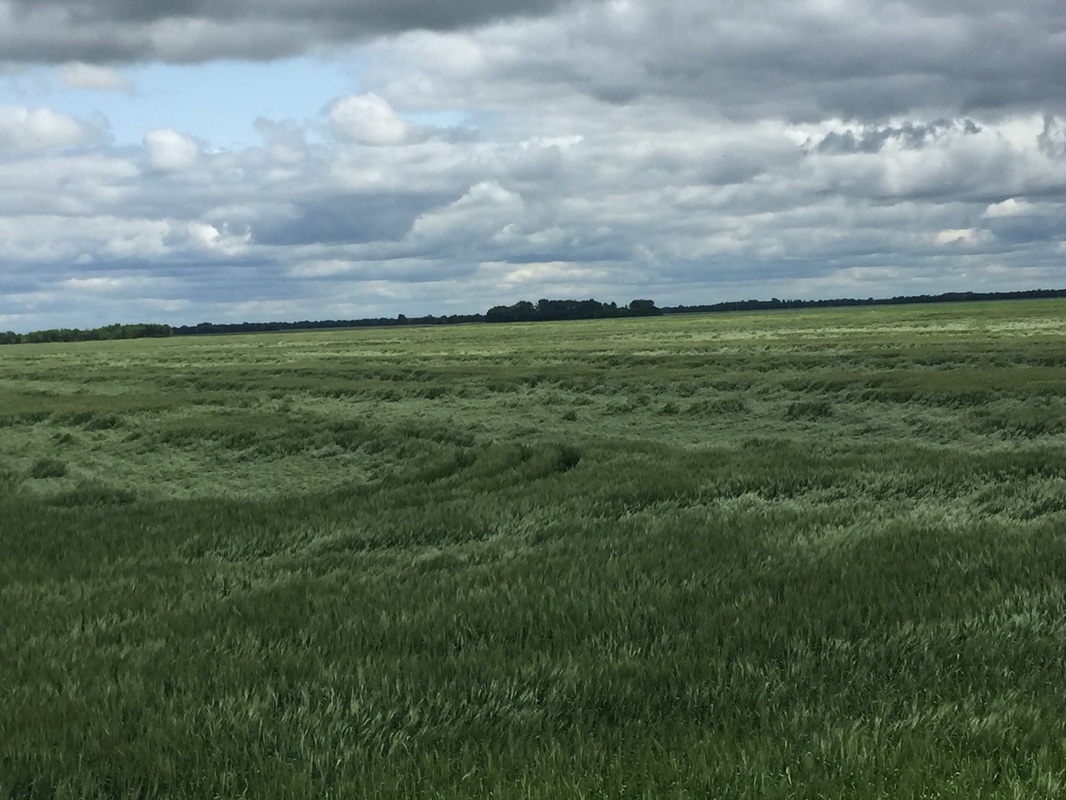If the wheat remains flat, it will make for a difficult, if not impossible harvest. The wheat won't dry because it's essentially a mat on the ground. It also means very slow harvest speeds. We really need to cross our fingers that the wheat
|
We got rain over the weekend. Lots and lots of rain. Stephen had around 4", some reports of 6" and some of less than 1". Gravel roads were under water, and some of the wheat and barley fields were laying flat. We had no hail, but heavy rains can flatten a crop just as much as hail. Above is one of our wheat fields that has "lodged", which means some of the wheat has fallen over. We are hopeful this wheat will stand back up. Here is another field, and the wheat is standing straight and tall. So why the difference? Quite often it is the variety. Each wheat variety is given a rating on lodging. Some wheat varieties have stronger straw than other varieties. It's just one of the factors farmers review before purchasing seed. Straw strength isn't the only factor in lodging. It may also be soil type, seeding rates, or fertilization, just to name a few.
If the wheat remains flat, it will make for a difficult, if not impossible harvest. The wheat won't dry because it's essentially a mat on the ground. It also means very slow harvest speeds. We really need to cross our fingers that the wheat
1 Comment
|
AuthorThis is what I get for majoring in agriculture economics at North Dakota State University. A farm near the Canadian border, far from any delivery restaurants or shopping centers. Sometimes in life you get nothing that you prayed for, and yet so much more than you asked. Life doesn't have to be easy to be wonderful and blessed. Archives
January 2018
Categories
All
|


 RSS Feed
RSS Feed